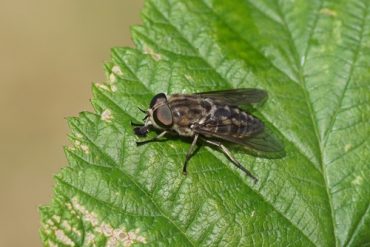

This particular insect seems innocuous enough at first glance. It just looks like an oversized housefly. But this giant housefly packs a punch.
Most everyone who lives in the United States knows what a horsefly is. Well, they know it is bad news at the least. This is because whether you are in Central Florida or Upper Peninsula Michigan, you will run into this dreaded creature.
Much like the mosquito, only females of the horsefly species bite. They feed on blood to be specific. They got their name because of their propensity to bother horses all day biting and nagging them. But they will bite you as well. And the bite can be very painful.
The horsefly doesn’t just give up when you swat at it either. It will literally chase its victim for up to 100 yards or more. They need blood to form and nourish the eggs that will eventually become their offspring.
Unfortunately, like any biting creature, horsefly bites can cause an allergic reaction in a small subsect of humans. If you are bitten by a horsefly and you start noticing allergic reactions like rapid heartbeat and/or trouble breathing, seek medical help immediately. Most people will just develop redness and soreness around the affected area however.
If you are bitten by a horsefly you should resist the urge to scratch it. This will only make it worse. You need to get a washcloth and dip it in very warm water. Then you should scrub the bite are. After you do this for about five minutes treat the area with an ice pack for 15 minutes. Leave the pack off for 15 minutes and then treat the area again with the icepack for 15 minutes.
Like we mentioned earlier the horsefly just looks like a housefly on steroids. It can be up to one inch long. They have large heads and large eyes. The wings are clear or dark. The female has razor-sharp pieces in her mouth which do the damage we are discussing. Unfortunately they can spread diseases like Lyme Disease, anthrax, hog cholera, filariasis, and tularemia.
Horsefly bites are a terrible nuisance. Knowing how to properly treat a bite can really improve the long-term affects of the bite. Horseflies can be killed with a flyswatter so don’t hesitate to have one of those around. This is because their bodies work very much like houseflies. They have tiny hairs all over their body which sense air movement. A good fly-swatter will have holes in it and allow air to pass through it rather than build up in front of it.
